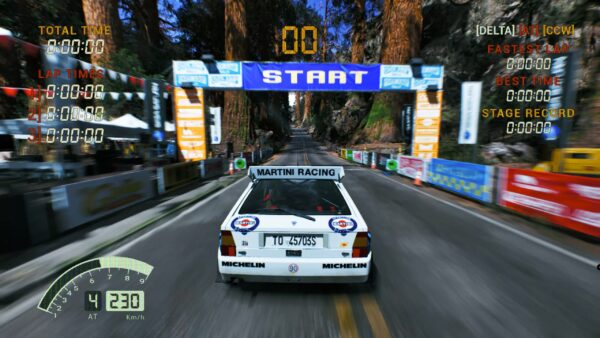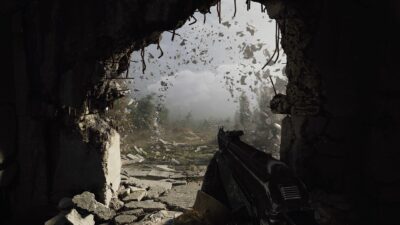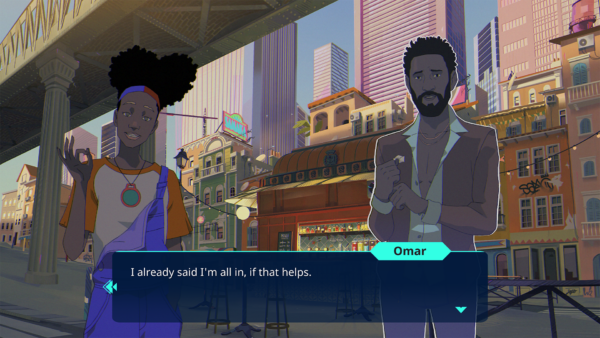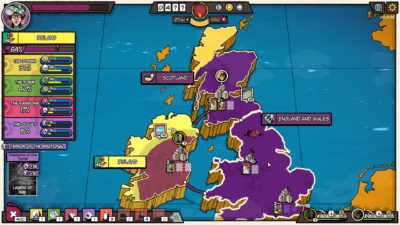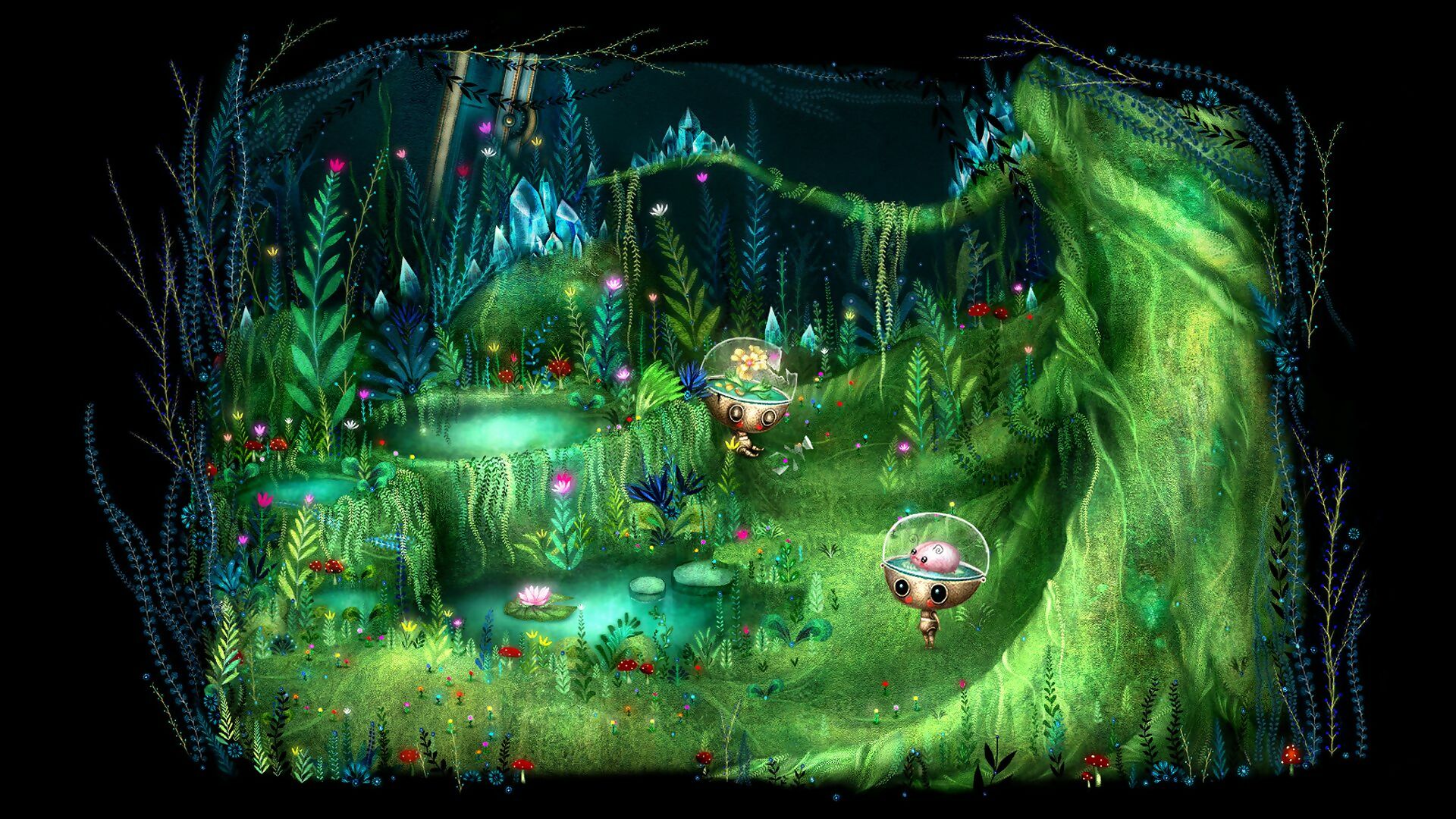
So much of game design is about making the inherently mechanical feel organic. Whether it’s creating characters that appear to live and breathe, crafting environments that feel dynamic, or coming up with puzzles that feel logical and of a piece with everything else, making games is at least partly about wrapping up mathematical systems and rules in a blanket that feels human and enticing. And that’s exactly what illustrator Lisa Evans is doing with her debut game, Growbot: it’s a point-and-click adventure that provides the perfect showcase for her warm, tactile art style.
Set aboard a space station called Kew, Growbot is a whimsical sci-fi tale about a dome-headed robot named Nara, and her efforts to save her home from a crystalline alien threat – a quest that requires exploring the cavernous station, solving puzzles, and interacting with its strange inhabitants. “I like the contrast between the vast emptiness of space and the deep greens of a lush garden floating through it,” Evans says of her game’s art style, which she dubs ‘bio-punk’. “I enjoy the impracticality of it, the awkwardness when something is out of place. Maybe that’s the punk part. I also love science fiction that is about modification of the self, and the merging of technology and biology.”
The seed for Growbot was first planted when Evans played Machinarium – Czech developer Amanita Games’ dreamlike point-and-click adventure from 2009. She wasn’t a huge gamer up to this point, but experiencing Machinarium unfold made her think about making the leap from illustration to game design – a path Machinarium developer Jakub Dvorský had followed himself.

“A lot of the puzzles involve fixing technology to bring the space station back online, which often causes its flora and fauna to come to life in the process,” Evans says.
“I loved Machinarium’s atmosphere and its non-verbal storytelling, but I think it was the pacing in particular that made me start thinking about making a game myself,” Evans explains. “I enjoyed being able to dwell in a world without pressure; and being able to explore all the little environment details. Those are also things I like about children’s books, and I could start to see how the ways in which I designed a children’s book could also be applied to an adventure game.”
Before work on Growbot could begin, though, Evans first had to learn how to use Unity and the Adventure Creator plug-in, which “handles a lot of the basic systems of an adventure game – inventories, dialogue systems, that sort of thing,” she tells us. “I spent a lot of time Googling and looking at tutorials in the early days of using Unity and Adventure Creator, but not so much for game design. I think in part because it can be overwhelming to focus on how other people do things, at least when you’re starting out. I did attend GDC one year, and that was useful, but otherwise, the learning process has mostly been driven by player feedback.”

As an illustrator, Evans worked on such books as M.H. Clark’s The Man Made of Stars before embarking on her first game.
Weird Science
Evans initially pitched Growbot’s concept to the Wellcome Trust, a biomedical research charity based in London. That pitch was ultimately unsuccessful, but it still provided the creative jumping-off point for the game’s themes and story. “I wanted to make a game about exploring altered states of consciousness from a scientific perspective,” says Evans. “The reason the growbots have large dome heads was that the player could drop different things inside them, and the environment would change around them to represent their conscious experience. The pitch was unsuccessful, but I decided to have fun with the character and see what else I could come up with. The game started to grow from that character and the artwork that I was creating, with the story coming afterwards.”
It’s the spontaneity of Evans’ work that makes Growbot so enticing, both visually and in its storytelling. The game’s surreal sci-fi world feels like one where almost anything can happen, and where the tone constantly hovers between gentle whimsy and something faintly unsettling. Says Evans: “I love the original stop-motion cartoon The Moomins, and animations by [Soviet/Russian animator] Yuri Norstein, like Hedgehog In The Fog – I love the sense of unease and longing in the music and visuals; the worlds are both beautiful and creepy. The characters in The Moomins are usually highly neurotic: you see their vulnerabilities, vices, and virtues. Exploring the ways nature and people are unpredictable, that is scary, funny, exciting, and sad all at the same time. I don’t think I’ll reach those heights with Growbot, but I do want to try to make something similar.”

Although Growbot is a solo project, Evans has regularly used player feedback to guide development: “It’s been useful to see what people respond to, what they don’t understand, and where they get stuck.”
The Buffy Connection
“I’ve been inspired in big and small ways by sci-fi and fantasy,” Evans tells us. “My favourites are usually science fantasy, which finds ways to marry big ideas and heavy feelings with lots of silliness. I was a big fan of Buffy the Vampire Slayer at university, for example. At one point in [Growbot], the protagonist Nara needs to go inside the mind of one of her crewmates in order to break her out of a negative feedback loop, which is directly inspired by a particular episode of Buffy.
“But there are lots of other more general inspirations in the game. I like antagonists that are really just misunderstood protagonists of their own story, and there’s a little of Frankenstein in Growbot’s main villain. One of my favourite books is Arthur C. Clarke’s Childhood’s End, and a bit of the existential crises at its core has seeped into the game.”


